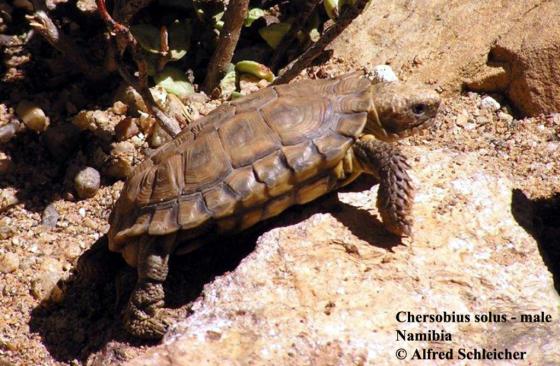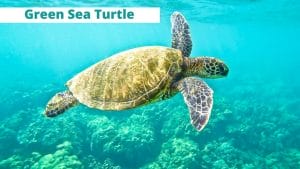Chersobius solus (Nama Padloper)
Home > Turtle Database > Chersobius solus (Nama Padloper)

Chersobius solus, known for its small size and distinctive appearance, is a unique species of tortoise native to South Africa. This tortoise is renowned for its rarity and specific habitat preferences, making it a subject of interest in conservation circles.
Native To These Regions
Northern Cape (South Africa)Native Turtle Species Map – Find Turtles by Region
Scientific Classification
- Kingdom: Animalia
- Phylum: Chordata
- Class: Reptilia
- Order: Testudines
- Family: Testudinidae
- Genus: Chersobius
- Species: C. solus
Common Names
- Nama Padloper
- Nama dwarf tortoise
- Nama padloper
- Berger’s cape tortoise
This Hilarious Turtle Book Might Know Your Pet Better Than You Do
Let’s be real—most turtle care guides feel like reading a textbook written by a sleep-deprived zookeeper.
This one’s not that.
Told from the snarky point of view of a grumpy, judgmental turtle, 21 Turtle Truths You’ll Never Read in a Care Guide is packed with sarcasm, sass, and surprisingly useful insights.
And hey—you don’t have to commit to the whole thing just yet.
Grab 2 free truths from the ebook and get a taste of what your turtle really thinks about your setup, your food choices, and that weird plastic palm tree.
It’s funny, it’s honest, and if you’ve ever owned a turtle who glares at you like you’re the problem—you’ll feel seen.
Identification
- Description: This species is one of the smallest tortoises in the world, featuring a speckled, brownish shell with a distinctly domed shape.
- Sexual Dimorphism: Males are generally smaller than females and have a more pronounced concavity on the plastron to facilitate mating.
Check more turtles from the Chelonia genus
Native Origin and Distribution
- Geographical Range: Chersobius solus is endemic to a limited area in Namaqualand, South Africa.
Preferred Habitat
Chersobius solus thrives in arid, rocky environments where it can blend into its surroundings to avoid predators.
Behavior
- Feeding Habits: It primarily feeds on small succulents and other desert plants.
- Predators: Predominantly at risk from natural predators such as birds and small mammals.
Reproduction
- Breeding Season: The breeding occurs mostly during the spring.
- Reproductive Method: This tortoise is oviparous, laying a small clutch of eggs that are incubated in the soil.
Conservation
- Extinction Status: Listed as Critically Endangered due to its limited distribution and population size.
- Threats: Habitat destruction and the illegal pet trade are significant threats.
- Conservation Measures: Protected under South African law and subject to habitat restoration projects.
Economic Importance
The economic significance of Chersobius solus is minimal, though it does play a role in ecotourism and educational programs within its range.
Interesting Facts
Chersobius solus has an exceptional ability to survive in arid conditions by metabolizing moisture from the sparse vegetation it consumes.
Research Studies
For more detailed scientific insights, you can refer to the research study linked here: The padloper’s tortuous path (Chelonia: Testudinidae) : two genera, not one

About Author
Muntaseer Rahman started keeping pet turtles back in 2013. He also owns the largest Turtle & Tortoise Facebook community in Bangladesh. These days he is mostly active on Facebook.












